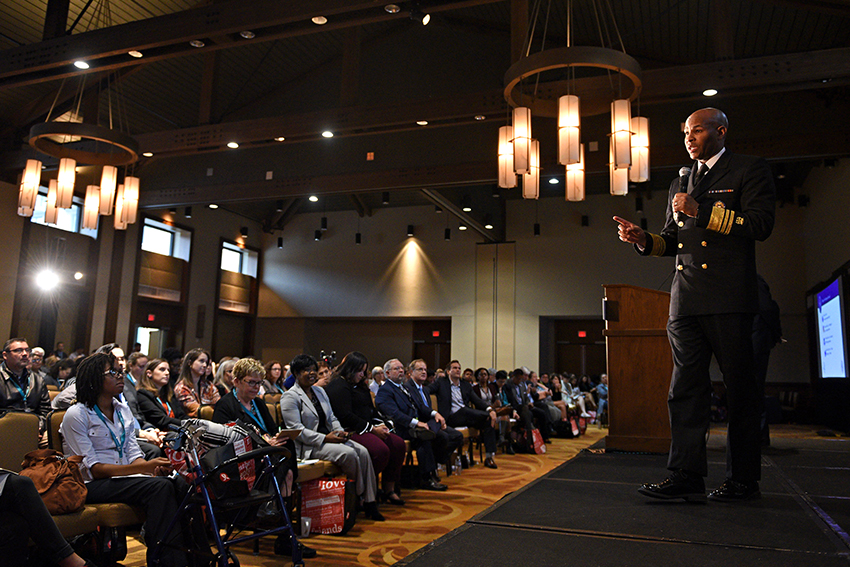Mental and physical consequences of racial inequalities threaded through the topics on the second day of the Healthier Texas Summit, a public-health event.
Karen DeSalvo, a professor in Dell Medical School’s population health department and the conference’s keynote speaker, discussed the importance of public health and the need for continuous improvement in Texas. When explaining the multiple factors of public health that remain underfunded, DeSalvo also touched on race, which continued to be important for two of the sessions held after the professor’s lunch presentation.
DeSalvo drew upon her experience working in the government as acting assistant secretary of health to connect the summit to the broader context of public health in the nation.
“The U.S. is one of the highest spenders on healthcare,” DeSalvo said. “But out of all the factors that contribute to an individual’s health, only 20 percent is from healthcare. We need to do more in public health to improve that 80 percent, like the environment and education everybody grows up in.”
One of the sessions, “Mental Health in Schools,” integrated the topic of racial isolation into mental health in K-12 education. The session included speakers Melissa DuPont-Reyes, a doctor in epidemiology in UT’s Latino Research Initiative (LRI), Gabriel Amaro, a research associate in LRI, and Tracy Spinner, a director of the School Health Advisory Council in AISD.
“Based on a study held in several Texas cities, the larger the city is, the more likely children’s identities are closely bonded to their school district,” Amaro said.
Within this school-based identity, the racial population in schools also plays a key role in a child’s mental health. DuPont-Reyes said the less a student’s race is present in a school, the higher the social isolation is for the child. She said this highlights the need for cultural awareness when trying to improve student’s mental health.
AISD has had major success in improving the mental health of their students, Spinner said. A culturally-specific counseling approach for students resulted in higher attendance rates, STAAR scores and lower disciplinary referrals compared to non-counseled peers, she added. Spinner said that despite this progress, there’s still a long way to go in ensuring every student gets the help they need.
This forward-thinking was also discussed in the session “Maternal Mortality: Trickle Down Theory.” Speaker Charleta Guillory, a doctor in the Texas Children’s Hospital, said maternal mortality rates were almost three times higher than average in black women.
“Maternal mortality doesn’t just affect mothers,” Guillory said. “It’s already a critical issue by itself, but when considering that infant survival rates drop significantly with a dead mother, there are so many lives at risk.”
Paula Rojas, a midwife and advocate against maternal mortality, suggested implementing more follow-ups for new moms.
“As a mother myself, I know we need and can do more,” Rojas said.
Despite the difficult topics the Summit approached through its multiple sessions and workshops, the energy throughout the day was anything but dismal.
“I think my favorite part of the summit was the energy here … the passion,” DeSalvo said. “Texas might be 38th in the nation for its public health, but it’s ready to raise that number.”















